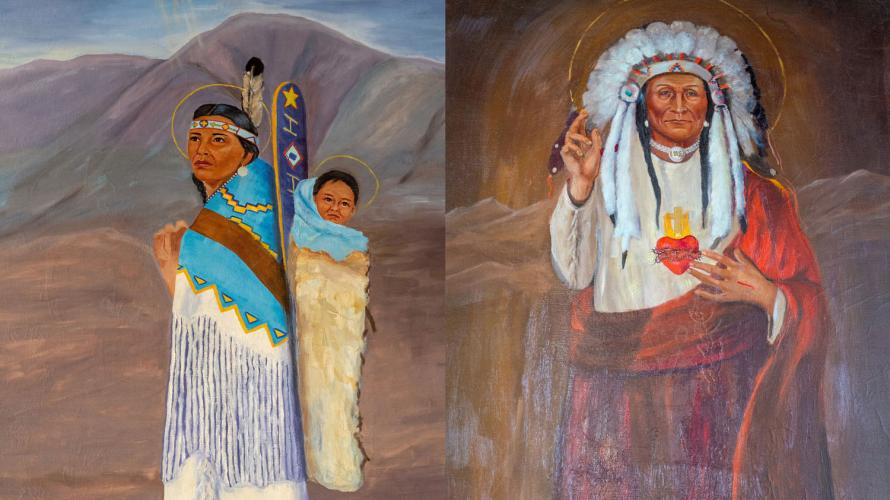
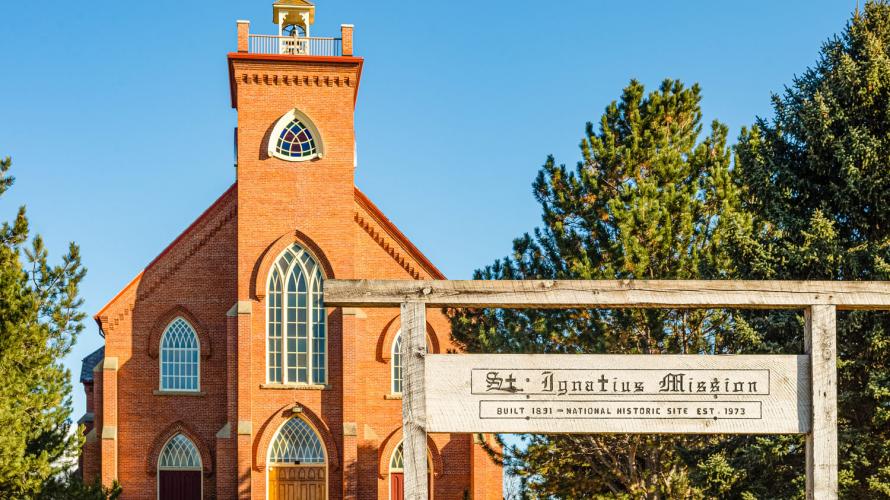
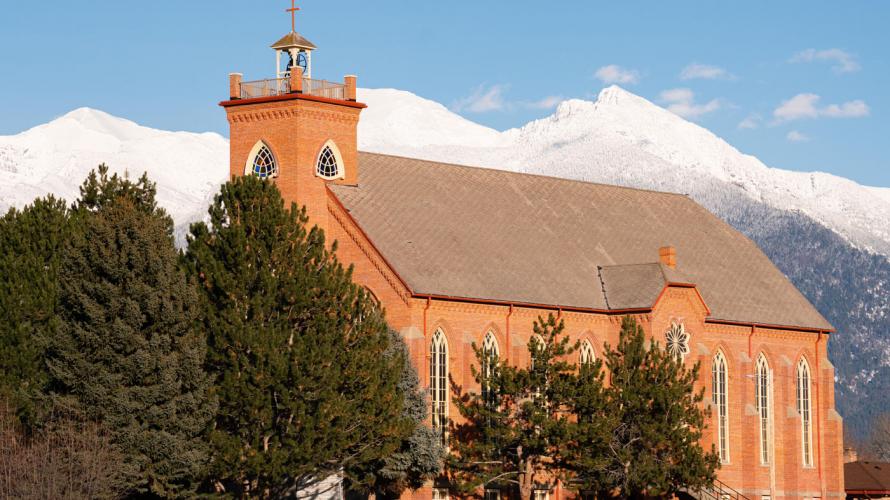
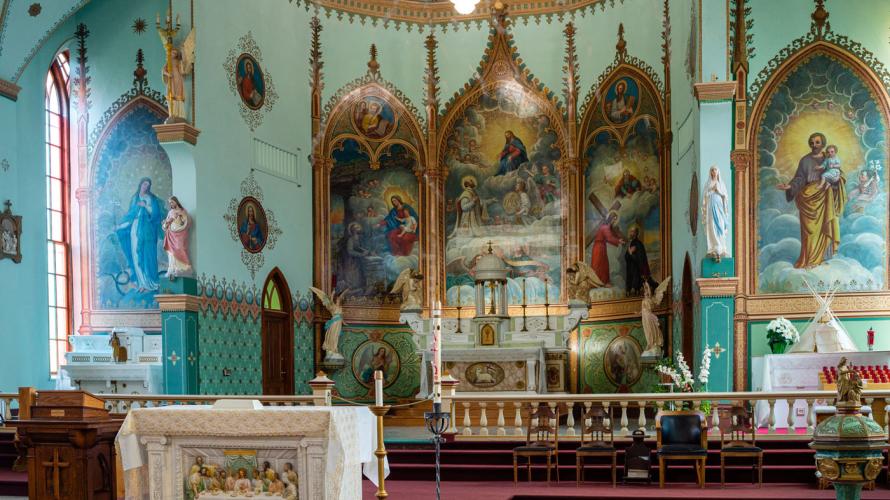
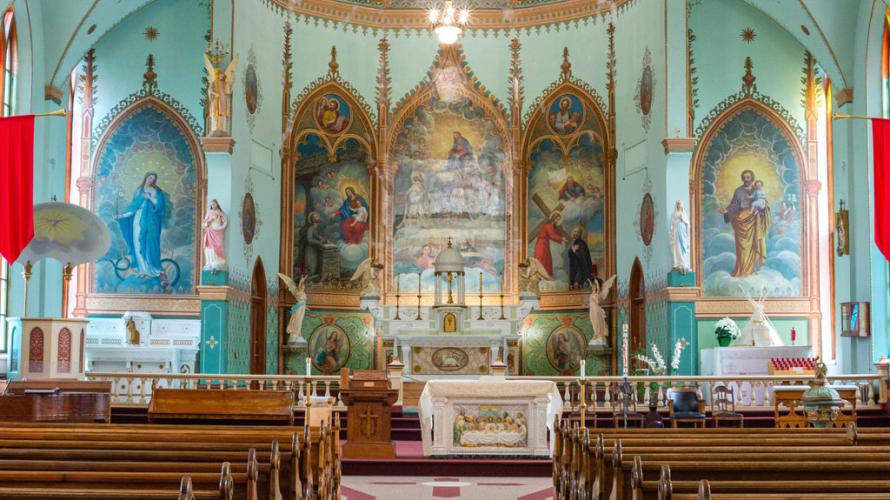
A Restoration of Faith
by Doug Stevens, “The Graytrekker”
The story of the “black robes” coming to western Montana in the mid-nineteenth century at the request of the Bitterroot Salish is well known. The Jesuit delegation, lead by Father Pierre-Jean De Smet, founded their mission of St. Mary’s in 1841 in the area of what is now Stevensville. Shortly after establishing St. Mary’s, De Smet went on to establish missions with the Couer d’Alenes and Kalispels in Idaho, as well. Among the other early mission sites in Montana was the St. Ignatius Mission, north of Missoula, which was established in 1854, about 7 miles south of Fort Connah. Fort Connah was a Hudson's Bay Trading Post established in the Mission Valley in 1846. Following the treaty of Hellgate in 1855, this fledgling mission assumed greater importance when the Salish relocated to the Flathead Reservation.
 |
In due course, the St. Ignatius Mission evolved into quite a large complex that included: the first Jesuit theologate and industrial arts school in the Northwest, the first Catholic sisters and Catholic school in Montana, and the first sawmill, flour mill, printing press, carpenter shop and blacksmith shop in the Mission Valley. There was also a hospital in the convent-school and a wood-constructed church on site. By the end of the nineteenth century, it was decided that the church should be a larger, more permanent brick structure. Of the buildings that comprised that early mission, only two small log cabins now remain of the original homes of the priests, which also served as the first chapel and a home for the Providence Sisters. They have been relocated next to the church on the north side, and both now serve as museums. The original wooden church was moved to Arlee in 1961. Much of the land surrounding the church where the Mission complex was located was later donated to build the town of St. Ignatius.
Construction on the church started in 1891 and took about two years to complete. It was a joint effort of the missionaries and the local Indian community. It was built of bricks made from local clay and wood from trees cut locally and sawed in the Mission’s sawmill. It was the first building in Montana to be wired for electric lights.
A short time later, at the turn of the century, one of the Jesuits was tasked with decorating the new sanctuary and began painting the murals for which the church is famous. His name was Brother Joseph Carignano, and he spent many years at the Mission as a cook and general handyman. He had no professional training in art but dedicated his spare time between his jobs to painting the murals inside. His paintings depict scenes from the Bible, as well as some saints, very much in the style of his native Italy. Behind the altar, he painted three scenes from the life of St. Ignatius Loyola, who founded the Society of Jesus (Jesuits) and to whom the church is dedicated. Above this is a mural of the Last Judgement and pictures of Mary and Joseph grace either side. Along the vaulted ceiling are paintings of various saints and Biblical scenes. All in all, Brother Crignano painted 58 murals, frescos and medallions during 1904 and 1905. This is, in fact, Montana’s very own “Sistine Chapel.”
Using local materials from an isolated frontier community over 100 years ago means there are to be some expected issues with longevity. Minor earthquakes and just the aging process has taken its toll – not only on the building itself but Brother Carignano’s paintings as well. The plaster, which in some places included bison hair in the recipe, was cracking, delaminating from the supporting lath and sagging. These religious, historical and cultural treasures were at a real risk of being lost.
After an extensive fund-raising effort, a 3-year restoration project was begun in 2018. For the past two summers, a skilled team from Boise-based Custom Plaster, with experience in restoring historically-sensitive plaster and artwork, has been hard at work on the restoration process. They set up necessary scaffolding in the church and painstakingly re-fasten the plaster to the lath, seal its cracks and re-touch paintings with historically accurate materials. It is an intense, long, detail-oriented process, but the results speak for themselves. The murals have regained the vibrancy they had when they were first painted over 100 years ago. In addition to the murals, there is another uniquely Native religious artwork, such as portraits of Jesus and Mary as Native Americans.
The final year of the restoration work begins again in April and will last through September this year to finish the project by working on the ceiling medallions. The project will require constructing a moving scaffolding the length of the aisle to reach the vaulted ceiling. It will be very difficult to view the artwork during these times, so if you haven’t taken the time to detour off Highway 93 to see this Montana landmark, or if you haven’t been to see it in years, it is well worth the stop. Also worth the visit are the “sister” churches – St. Mary’s, outside of Stevensville, and the Cataldo Mission in northern Idaho, just off I-90. It is the oldest building in Idaho still standing and was built by Father Ravalli, from the Montana St Mary’s Mission - without a single nail!
Happy Trails!
For those wishing additional information on the Mission and the restoration work, here are some links: * Saint Mary’s Mission * Treaty of Hellgate * Scanned Flatheads Treaty * General information on the Mission Additional stories on the restoration work: * Work Continues At Historic St. Ignatius Mission * Missoulan Article on Restoration Work




